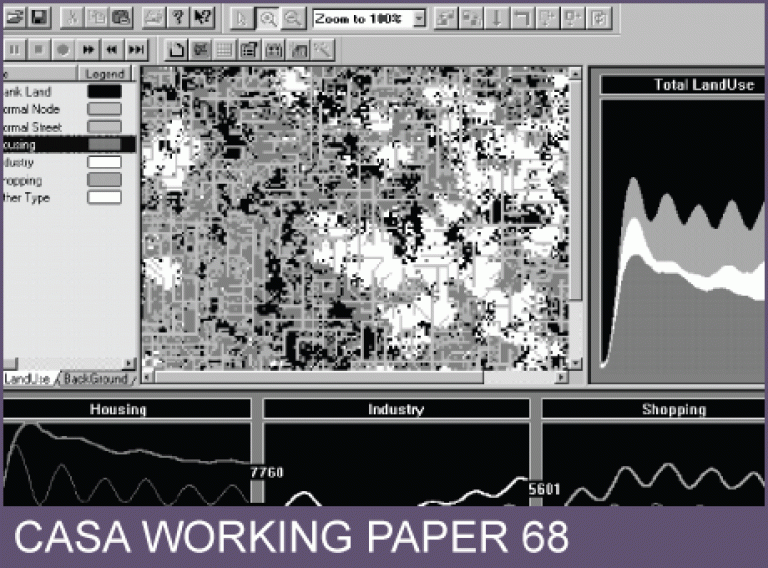CASA Working Paper 68

1 November 2003
Integrated Urban Evolutionary Modeling
Cellular automata models have proved rather popular as frameworks for simulating the physical growth of cities. Yet their brief history has been marked by a lack of application to real policy contexts, notwithstanding their obvious relevance to topical problems such as urban sprawl. Traditional urban models which emphasize transportation and demography continue to prevail despite their limitations in simulating realistic urban dynamics.
To make progress, it is necessary to link CA models to these more traditional forms, focusing on the explicit simulation of the socio-economic attributes of land use activities as well as spatial interaction. There are several ways of tackling this but all are based on integration using various forms of strong and loose coupling which enable generically different models to be connected. Such integration covers many different features of urban simulation from data and software integration to internet operation, from interposing demand with the supply of urban land to enabling growth, location, and distributive mechanisms within such models to be reconciled. Here we will focus on developing better housing market and site subdivision processes within CA models, taking as our starting point the Dynamic Urban Evolutionary Model (DUEM) first proposed by Xie (1994) and operationalized through a graphical user interface by Batty, Xie and Sun (1999). We set our new model within a wider model-based infrastructure, devising a version which integrates the cellular approach to various residential models of traditional form. We call the resulting system IDUEM. This model system retains the cellular approach which is highly visual in terms of the way urban growth and change is conceived but uses this as the interface to different varieties of model, making the framework much more applicable to real policy problems.
This working paper is available as a PDF. The file size is 653KB.
Authors: Michael Batty, Yichun Xie
Publication Date: 1/11/2003
 Close
Close

